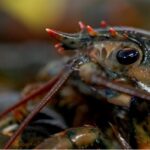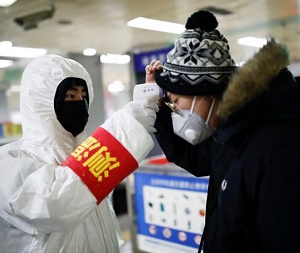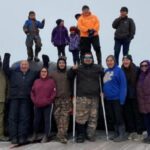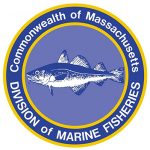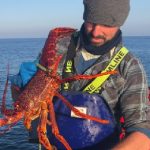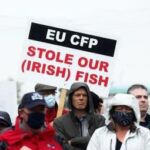Covid-19 Transmission and Mandatory On-Board Observers
8-12-2020
A FishNet-USA User’s Manual
You have two Senators and one Member of Congress representing you in Washington. If you are concerned with the recent NOAA/NMFS decision to once again require their observers on board commercial fishing vessels in spite of the fact that so little is understood about the mechanisms by which Covid-19 is transmitted (and that NOAA/NMFS has tied up its own survey vessels because of the pandemic), you should let them know, and you should let them know ASAP, because according to the latest communication from the Feds the observers will be back and looking for rides on August 14.
I’m repeating below the contact information that I included in the last FishNet. Call each of the offices listed, ask to speak with the fisheries/environmental staffer, explain that you are a constituent, what the situation is, what the potential negative impacts of this premature resumption of the observer program could be and, if you think it appropriate, ask if you could email them some background information.
Don’t think that anyone else is going to do this for you. You live, work, spend and vote in his or her bosses’ district, and she or he is going to listen to you before they’ll listen to anyone else.
https://www.senate.gov/general/contact_information/senators_cfm.cfm?OrderBy=state&Sort=ASC
https://www.house.gov/representatives
Best,
Nils Stolpe
More on Covid-19 – (Sorry for the length of the article, but it’s important)
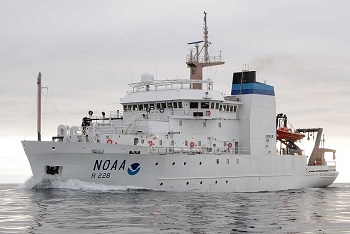 We know that research cruises by the R/V Bigelow have been cancelled for (at least) the rest of this year. Unsubstantiated scuttlebutt is ditto for the R/V Lasker and the R/V Shimada. There must be a compelling Covid-19 related reason for this, and I’d suspect for the fact that NOAA/NMFS has been making it awfully hard to get solid info on where their research vessels are or aren’t deployed and what they are or aren’t working at (and if this info is readily available but I’m just not aware of where it is, my sincere apologies to NOAA/NMFS).
We know that research cruises by the R/V Bigelow have been cancelled for (at least) the rest of this year. Unsubstantiated scuttlebutt is ditto for the R/V Lasker and the R/V Shimada. There must be a compelling Covid-19 related reason for this, and I’d suspect for the fact that NOAA/NMFS has been making it awfully hard to get solid info on where their research vessels are or aren’t deployed and what they are or aren’t working at (and if this info is readily available but I’m just not aware of where it is, my sincere apologies to NOAA/NMFS).
It’s becoming more and more obvious that the more we learn about how Covid-19 is spread, the more we know that there’s a lot more that we don’t know. As the following article indicates, the indicators of infection that we’ve been relying on are pretty far from reliable, and it seems to me that the most “reliable” – though definitely not infallible – indicator we have is personal relationships with people. We know who to believe, we know who is reliable, we know who we can trust – and until tests are easily and cheaply available and are of known accuracy, that’s about all we’ve got. As it stands, an observer could talk to or stand next to or interact in we don’t know in how many other ways with, someone who is asymptomatic or presymptomatic. No matter what the observer, his or her employer, or NOAA/NMFS assures us of, when we share a boat with its really tight quarters with her or him for a trip, we don’t have anything approaching a guarantee that we and our families will be safe.
One could argue that this is the same story on any vessel with any crew, but that’s not the case. Captains and crew members know the people who work with them – generally personally, sometimes by reputation. They know who to trust and who not to.
But most importantly, they are first level, essential workers in a critical industry. Like all such workers, we need them, and we owe them as much support and as much protection as we can provide to them.
On the other hand, mandatory fisheries observers are about as far from necessary as one can get in this pandemic year. While they unknowingly will be putting fishermen at risk, in actuality all they will be doing will be providing government scientists with data points for them to add to data sets that in instances go back fifty years or more. NOAA/NMFS has effectively demonstrated the relative unimportance to the fisheries management process of missing a year of data by cancelling their own annual surveys. From the science perspective this isn’t ideal but it’s certainly workable. No scientist is going to throw his or her hands up in the air at the thought of being forced to “start all over again.” In reality all it means is that there will be some missing graph points, and statisticians have been effectively dealing with them for centuries.
Even Asymptomatic People Carry the Coronavirus in High Amounts – Researchers in South Korea found that roughly 30 percent of those infected never develop symptoms yet probably spread the virus.
By Apoorva Mandavilli
NY Times/Aug. 6, 2020
Of all the coronavirus’s qualities, perhaps the most surprising has been that seemingly healthy people can spread it to others. This trait has made the virus difficult to contain, and continues to challenge efforts to identify and isolate infected people.
Most of the evidence for asymptomatic spread has been based on observation (a person without symptoms nevertheless sickened others) or elimination (people became ill but could not be connected to anyone with symptoms).
A new study in South Korea, published Thursday in JAMA Internal Medicine, offers more definitive proof that people without symptoms carry just as much virus in their nose, throat and lungs as those with symptoms, and for almost as long.
“It’s important data, that’s for sure,” said Benjamin Cowling, an epidemiologist at the University of Hong Kong who was not involved in the work. “And it does confirm what we’ve suspected for a long time — that asymptomatic cases can transmit infection.”
Discussions about asymptomatic spread have been dogged by confusion about people who are “pre-symptomatic” — meaning they eventually become visibly ill — versus the truly asymptomatic, who appear healthy throughout the course of their infection.
The new study is among the first to clearly distinguish between these two groups.
“There’s been this big question pretty much since January, since data started coming out of China, about people that were asymptomatic or pre-symptomatic,” said Jason Kindrachuk, a virologist at the University of Manitoba who was not involved in the work. “What we haven’t really had any clue of yet is what role people who are asymptomatic play in transmission of disease.”
The new study measured the virus’s genetic material in the patients; the researchers did not follow the chain of transmission or grow live virus, which might have more directly confirmed active infections.
Still, experts said the results strongly suggest that asymptomatic people are unwitting broadcasters of the virus.
“They don’t look any different from the symptomatic population” in terms of how much virus they carry, said Marta Gaglia, a virologist at Tufts University in Massachusetts who was not involved in the work. “There’s no actual reason to believe a priori that they would transmit any differently.”
Dr. Cowling was more circumspect. Because asymptomatic people do not cough or sneeze, he said, it is possible that they are less efficient at expelling the virus than those who are clearly unwell.
On the other hand, Dr. Gaglia offered, people who feel ill tend to take to the bed or couch, whereas the infected but unaware may carry on with their business, sickening others along the way.
(The remainder of the article is linked above)



































